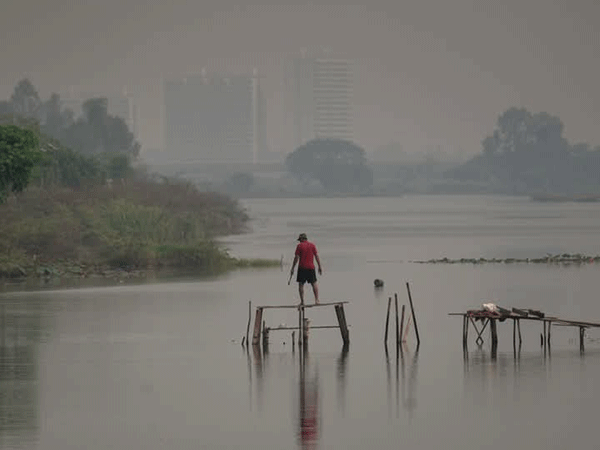PM2.5 level rises in provinces
Dry weather across the country, along with forest fires and the burning of garbage in villages, has resulted in satellite imagery picking up several “fire hotspots” that are causing smog or the spread of particulate matter smaller than 2.5 microns (PM2.5) in several provinces.
 |
Vientiane has been affected by air pollution over the past few days.
--Photo Phoonsab Thevongsa |
The Ministry of Natural Resources and Environment has issued a warning for the PM2.5 level during the dry season from March to April, including 30 dangerous days. During this period, the weather is not conducive to the removal of dust and the air will not circulate.
These conditions, combined with weak winds, will cause continuous dark, fog-like weather over many days. These conditions will also affect health and visibility.
Air quality monitoring by ground-based measurement stations showed that PM2.5 values exceeding the standard (>50 µg/m³/24h) have been detected in the provinces of Oudomxay, Luang Namtha, Bokeo, Khammuan, Savannakhet, Champassak and Vientiane.
PM2.5 refers to fine particulate matter that can penetrate deep into the lungs and bloodstream, causing both short-term and long-term health issues.
The Air Quality Index (AQI) categorises pollution levels as follows: 0-50 (good), 51-100 (moderate), 101-150 (unhealthy for sensitive groups), 151-200 (unhealthy), 201-300 (very unhealthy), and above 300 (hazardous).
People with asthma and any chronic lung disease or cardiovascular disease are at risk of exacerbated symptoms, which could prove fatal. The Ministry of Health has advised people to wear a face mask at all times when outside, to reduce inhalation of fine ash or dust.
By Times Reporters
(Latest Update March 29, 2025)
|


